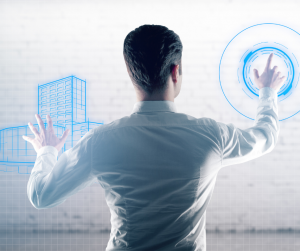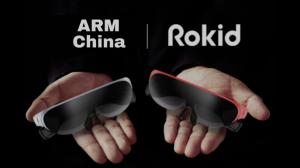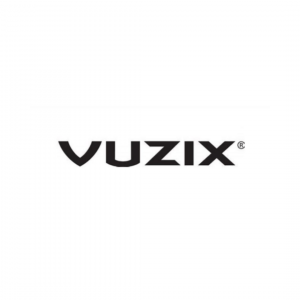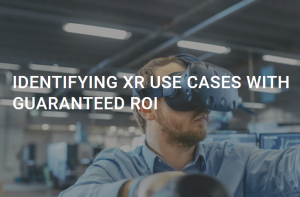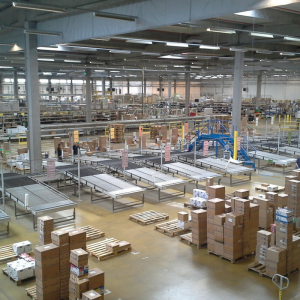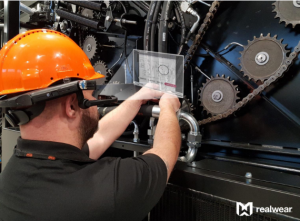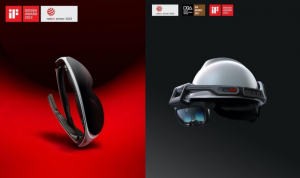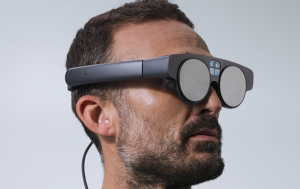Top XR Vendors majoring on Manufacturing
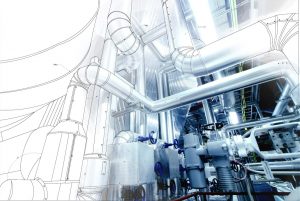
From comprehensive VR environments where people can work together remotely over digital twins of products, to AR solutions which allow professionals to access expertise on the move, there’s something for everyone.
Of course, in the industrial and manufacturing landscape, there are specific requirements to consider when choosing an XR vendor.
Some spaces require headsets to be more durable or capable of withstanding dangerous environments or conditions. Some industrial companies also need their technology to work easily in low-bandwidth environments.
Today, we’re looking at some of the XR vendors delivering the kind of custom experiences industrial and manufacturing leaders need.
Kognitiv Spark
A leader in augmented reality tools for industrial remote support, Kognitiv Spark is the company behind RemoteSpark. The intelligent AR ecosystem provides manufacturing and industrial companies with access to a low-bandwidth and highly secure mixed reality platform, perfect for environments where an excellent internet connection isn’t always available.
RemoteSpark and Kognitiv Spark allow industrial companies to empower their teams whether they’re on the production floor or in the field. The company works with everything from Industrial brands to Aerospace and Defence companies worldwide.
RealWear
Bringing the power of hands-free information to manufacturing and industrial companies, RealWear’s solutions are leading the way to a new age of innovation.
Assisted Reality solutions from RealWear make it quick and simple for users in a business environment to access the information they need to make better decisions in the workplace.
RealWear’s tools are designed with the unique requirements of industrial environments in mind, giving all the power of a wireless Android tablet to employees in the form of smart glasses with access to multi-media files, collaboration tools, and more.
Holo-Light
An innovator in the XR space, Holo-Light is building an all-in-one environment where users can easily host and stream any XR application on a range of high-performing mobile devices. The ecosystem supports everything from powerful processing speeds to global availability of AR and VR experiences built for the industrial space.
With Holo-Light, companies can gain access to all the technology they need for endless processing power and high security. Flexible infrastructure and reduced development costs have earned Holo-Light the attention of many leading brands already, like BMW and Danfoss.
Microsoft
Leaders in the world of mixed reality, Microsoft is changing the way we look at manufacturing forever. With Microsoft Mixed Reality software and headsets like the HoloLens 2, companies in the industrial landscape can rapidly transform their workforce, building more agile and collaborative factories, and improving the speed to market for new products.
According to Microsoft, manufacturers can improve revenue by up to 5% with the power of mixed reality, and save an average of 75% on training time when bringing new people into the staff mix. With HoloLens, companies can easily provide their team members with access to subject matter experts and support wherever they are, while ensuring they remain hands-free with their technology.
Taqtile
Taqtile is a leader in the extended reality space for employees on the move. With this innovative company, brands can access a more immersive environment for harnessing information in the industrial landscape and sharing it on a better scale. Tools like the Manifest platform ensure companies can distribute information to deskless and virtual workers wherever they are.
With Taqtile, brands can build more effective training environments for new members of staff, but they can also provide existing team members with more support as they work.
The technology supports real-time streaming of crucial information and guidance from experienced technicians and subject-matter experts anywhere.
Varjo
Offering a range of ways for industrial and manufacturing companies to embrace the world of extended reality, Varjo can support both mixed reality and virtual reality case studies.
With mixed reality, employees in a manufacturing company can leverage real-time guidance, annotations and information from subject matter experts when they’re working in the field or remotely.
With virtual reality, companies can bring entire teams of innovators together to work cohesively on digital twin products, design new ideas, and accelerate the go-to-market process. Varjo’s ease of use combined with the flexibility of the technology makes it an excellent pick for a lot of brands.
Lenovo
Lenovo has stood ahead in the technology landscape for a number of years, providing a wide range of innovative tools and cutting-edge devices to all kinds of industries. In the manufacturing and industrial landscape, companies can now access Lenovo’s extended reality innovations to enhance productivity and enable collaboration on a new scale.
Lenovo is unique in the XR market in its ability to offer technology for virtually all kinds of employees in the industrial space, from developers and product designers to production engineers and testing engineers. If you’re looking for technology to empower your entire workforce, Lenovo has you covered.
Arvizio
Committed to building augmented and mixed reality experiences specifically for enterprise environments, Arvizio is a market leader in the industrial space.
The company offers highly scalable and customizable augmented and mixed reality technologies to help with everything from training, to helping employees accomplish more when they’re on the job.
The Immersive 3D enterprise technology from Arvizio can integrate with a wide range of tools and empower business leaders to create a range of training and upskilling experiences for business leaders. If you’re hoping to bring more of the digital world into the real world in manufacturing, Arvizio could be the right partner.
Matterport
A leader in 3D technology, Matterport is ideal for companies who want to provide virtual tours and experiences to both manufacturing clients, and members of staff. In the industrial environment, Matterport’s solutions can allow business leaders to design and implement digital twins of their facilities for other professionals to explore at a distance.
The Matterport environment is perfect for building engagement, whether you’re trying to train and onboard a new member of staff, or you’re looking for a way to build trust with a prospect.
